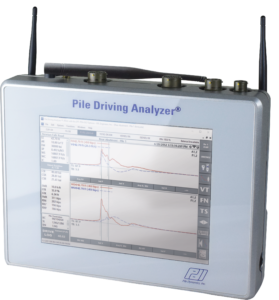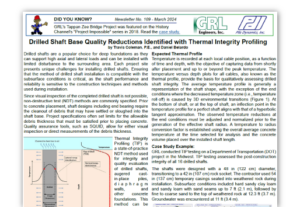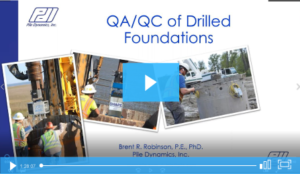Is it possible to assess the integrity, depth, and loading capability of existing concrete piles?
The low strain integrity test (PIT) is an option for determining pile length and integrity. In order to use PIT, the existing concrete pile must be drilled and not provide support to the structure. The PIT test will be less successful, if the pile is integral to the structure’s support. Piles with substantial non-uniformity (neck or bulge) generally inhibit the ability to see below the first major non-uniformity.
A parallel seismic test is an option for determining unknown length. This test requires drilling a cased borehole near the tested pile. But, the parallel seismic test cannot evaluate integrity. First, an engineer will determine the pile’s length and identify the soils. Following, an engineer can perform a static analysis to estimate a concrete pile’s capacity.
Additionally, the PIT or parallel seismic test could be used to test one-piece driven piles. Conversely, the PIT is less successful in testing jointed segmental driven piles. The first joint on these piles blocks the wave transmission.
When working with drilled or driven concrete piles, a high strain dynamic test (PDA plus CAPWAP® signal matching) is an option for determining the length, capacity, and integrity of a driven pile. For the high strain dynamic test’s success, the pile’s top needs hit axially with a relatively large drop weight. The drop weight should be at minimum 2% of the ultimate capacity.
Return to FAQs



